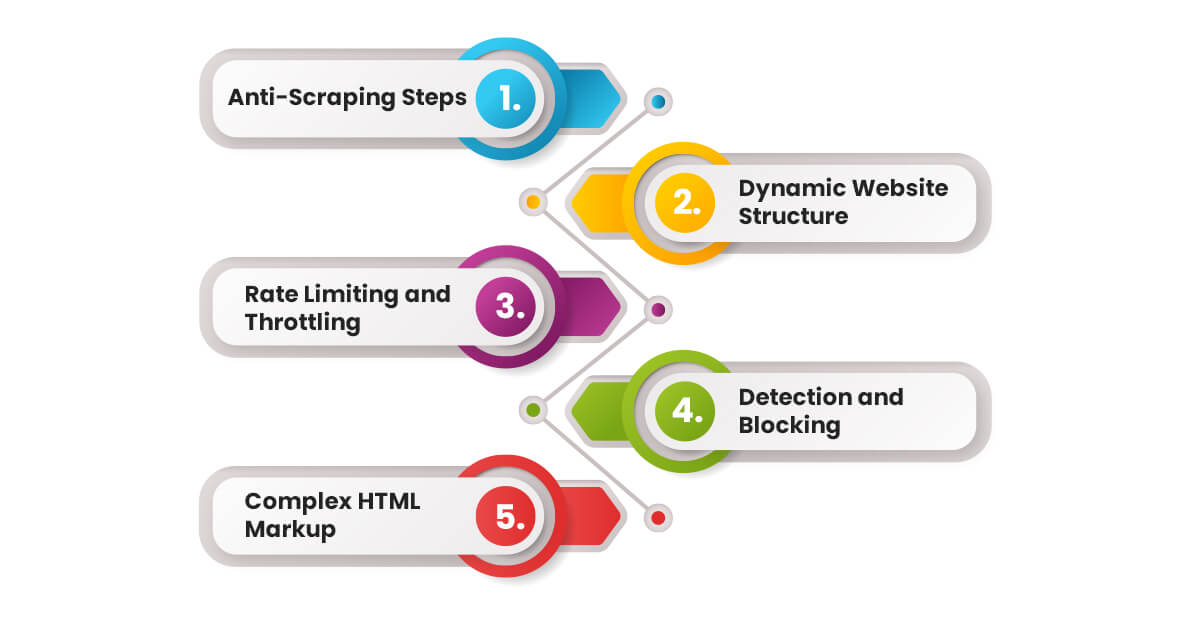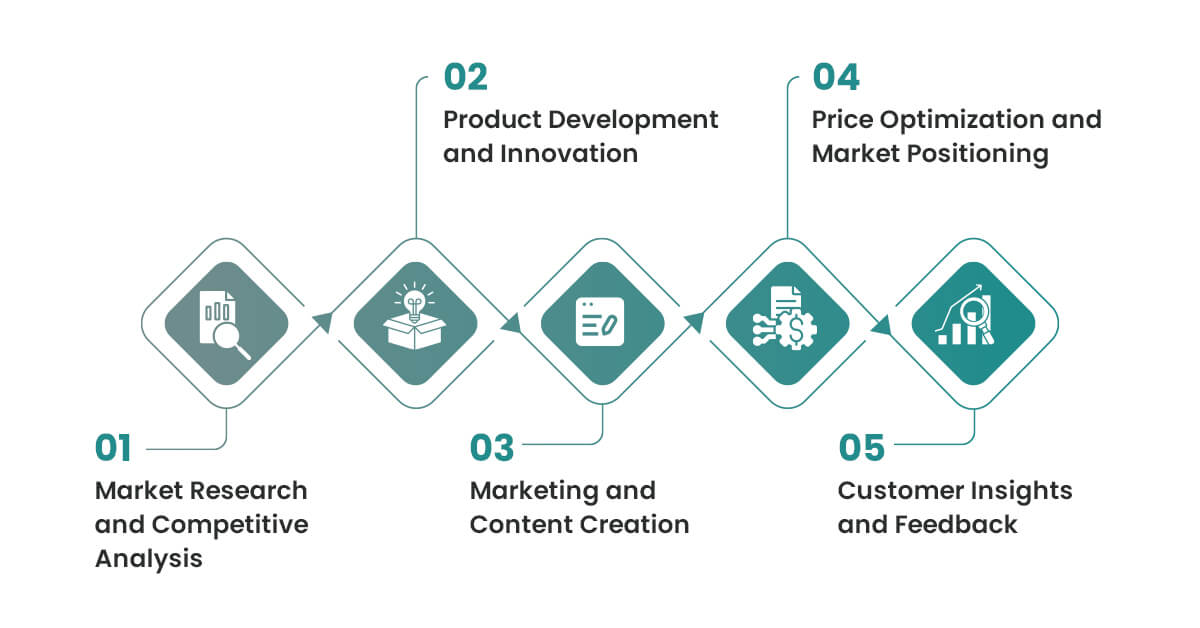Blog / Transform data analysis capabilities by mastering Amazon review scraping, showcasing the effectiveness of Python language to scrape Amazon user reviews.
15 Feb 2024

In the digital age, data is king, and for e-commerce businesses, customer reviews on platforms like Amazon are invaluable insights into consumer preferences and sentiments. However, manually sorting through thousands of reviews can be a daunting task. This is where the art of review scraping comes into play, and with the right tools and techniques, you can master this process efficiently.
In this blog post, we'll explore the art of scraping Amazon reviews using Python and Beautiful Soup, unlocking the potential for extracting and analyzing valuable data.
Amazon reviews scraping means automatically extracting and collecting reviews from Amazon's product pages using web scraping techniques. This tool goes through the website's code, finds the reviews, and pulls out important stuff like who wrote the review, how many stars they gave, what they said, and when they wrote it. It's handy for getting lots of reviews all at once. But it's important to remember to use this tool responsibly and follow the rules set by Amazon and the law.
Amazon Reviews Scraping Using Python follows a process that includes sending requests to the review pages, understanding the webpage's structure, and then extracting desired information such as reviewer names, ratings, and comments. It's akin to teaching a computer to navigate Amazon's website and gather review data without the need for manual interaction.
Scraping Amazon review data gives organizations significant information about customer preferences, market trends, and product demand in certain categories. Companies that collect many reviews can evaluate customer feedback to better understand what drives purchase choices and impacts consumer behavior.
By scraping Amazon reviews, we learn much about what people like and desire in various items. This allows businesses to understand the market better and determine what customers want. Knowing this allows organizations to better plan their strategy for attracting the proper customers.
By reading and scraping Amazon customer reviews, businesses may receive suggestions for improving their products. They may discover which features clients desire and what needs to be improved and even generate new product ideas. This allows them to create items that are tailored to the specific needs and preferences of their clients.
Amazon reviews provide valuable insights from genuine customers. Scraping Amazon customer reviews and evaluations can inspire businesses to develop marketing material, such as customer success stories or examples of how the product benefitted someone. This type of material can help clients trust the brand more.
Analyzing Amazon reviews can help firms determine optimal pricing for their items. Companies may establish prices that earn money while remaining appealing to customers by studying how they react to varied rates. This helps them remain competitive in the market.
Amazon reviews scraping provide valuable feedback for product development. Based on customer feedback, businesses may discover feature requests, areas for development, and potential new product ideas, allowing them to improve their product offerings and better suit the requirements and preferences of consumers.
Customers often provide useful ideas and experiences in reviews. Scraping Amazon customer reviews and evaluations can motivate the development of marketing content like testimonials, case studies, or user tales, all of which can assist potential buyers in creating trust.

Scraping Amazon customer reviews helps to understand what customers think about the goods they buy. This helps us understand if a product is good or if there are problems with it.
On the other hand, Amazon reviews scraping using Python comes with its own set of challenges:
IP filtering and CAPTCHAs are two of the steps that Amazon has put in place to stop website scraping. Because of this, it is more challenging for automated systems to access and get data from Amazon sites.
Because Amazon constantly modifies the look and feel of its website, it might be difficult to keep scraping programs up to date because they could malfunction or stop working.
In order to slow down and reduce the efficiency of the scraping process, Amazon may place a restriction on the total number of requests a scraper may make in a given period of time.
Amazon is vigilant in protecting its website against scraping activities. They use advanced algorithms to detect and block scraping attempts. These algorithms can identify patterns commonly associated with automated scraping tools, such as high-frequency requests or predictable browsing behavior.
Amazon's product sites use sophisticated HTML structures that include dynamic content, JavaScript, and nesting tags. This intricacy makes retrieving useful information reliably and effectively difficult for scrapers. Scrapers must crawl through levels of nested HTML elements to find and extract the needed data, which necessitates advanced parsing algorithms and strong error-handling procedures.
Furthermore, Amazon constantly alters its website structure and markup, demanding ongoing maintenance and tweaking of scraping programs to ensure continuing performance.
Businesses can perform Amazon review scraping by utilizing the capabilities of Python. Scraping Amazon customer reviews requires to follow steps:
Step-1 Setting Up
You'll be utilizing Python, so install three packages: Requests, Pandas, Beautiful Soup, and lxml, as well as Python 3.8 or above.
Next, import the necessary libraries and start creating a header.
import requests
from bs4 import BeautifulSoup
import pandas as pd
custom_headers = {
"accept-language": "en-GB,en;q=0.9",
"user-agent": "Mozilla/5.0 (Macintosh; Intel Mac OS X 10_15_7) AppleWebKit/605.1.15 (KHTML, like Gecko) Version/16.1 Safari/605.1.15",
}
Step- 2 Getting the Review Objects
When you're ready to start Amazon reviews scraping using Python, collect each review object and extract the necessary data from it. To extract each product review, pick a CSS selector and use the. select function.
This option may be used to find Amazon reviews:
div.review
To collect them, execute the code that follows:
review_elements = soup.select("div.review")
You will then have a selection of reviews to read through and get the relevant information from.
To start iterating, you'll need an array to store the processed reviews and a for loop:
scraped_reviews = [] for review in review_elements:
Step-3 Scraping Reviews
Author name
The author's name is the first thing on our list. Use the CSS selector below to pick the name:
span.a-profile-name
r_author_element = review.select_one("span.a-profile-name")
r_author = r_author_element.text if r_author_element else None
Review rating
The review rating is the following item to be retrieved. You may locate it using the following CSS:
i.review-rating
The following unnecessary material will be removed from the rating string:
r_rating_element = review.select_one("i.review-rating")
r_rating = r_rating_element.text.replace("out of 5 stars", "") if r_rating_element else None
Title
Use this selector to obtain the review's title:
a.review-title
You must provide the span as indicated below in order to obtain the real title text:
r_title_element = review.select_one("a.review-title")
r_title_span_element = r_title_element.select_one("span:not([class])") if r_title_element else None
r_title = r_title_span_element.text if r_title_span_element else None
Review text
To find the review text itself, choose the following selector:
span.review-text
r_content_element = review.select_one("span.review-text")
r_content = r_content_element.text if r_content_element else None
Date
span.review-date
r_date_element = review.select_one("span.review-date")
r_date = r_date_element.text if r_date_element else None
Verification
span.a-size-mini
r_verified_element = review.select_one("span.a-size-mini")
r_verified = r_verified_element.text if r_verified_element else None
Images
img.review-image-tile
r_image_element = review.select_one("img.review-image-tile")
r_image = r_image_element.attrs["src"] if r_image_element else None
Now that you've acquired all of this information combine it into one object. Then, before we begin our for loop, add that object to the array of reviews you prepared for this product:
r = {
"author": r_author,
"rating": r_rating,
"title": r_title,
"content": r_content,
"date": r_date,
"verified": r_verified,
"image_url": r_image
}
scraped_reviews.append(r)
Step- 4 Exporting Data
After all of the data has been scraped, the last step is to export the data to a file. The CSV format of the data may be exported using the code provided:
search_url = "https://www.amazon.com/BERIBES-Cancelling-Transparent-Soft-Earpads-Charging-Black/product-reviews/B0CDC4X65Q/ref=cm_cr_dp_d_show_all_btm?ie=UTF8&reviewerType=all_reviews"
soup = get_soup(search_url)
reviews = get_reviews(soup)
df = pd.DataFrame(data=reviews)
df.to_csv("amz.csv")
After executing the script, you will find your data in the file amz.csv.

Amazon reviews scraping offers numerous valuable use cases across various industries. Here are some detailed examples:
Businesses can gather valuable insights about what customers like, dislike, and want in certain types of products by looking at Amazon reviews. By analyzing these reviews, they can see which features people prefer, what complaints come up often, and how satisfied consumers are in general. This information helps businesses compare their products to competitors', find areas where they can make improvements, and come up with plans to stay ahead in the market.
For example, a smartphone company might study Amazon reviews to see which features people love in other brands' phones. Then, they can use this knowledge to improve their phones, keeping customers happy and staying competitive.
Listening to what customers say on Amazon can be super helpful for making products better. When businesses read through reviews, they can spot patterns, find out what customers don't like, and see what new features people want. This helps companies tweak their products to make them even better for their customers. For example, if a software company reads reviews, they can find out if there are any bugs or things that are hard to use. Then they can fix those issues and make their customers happier.
When you buy something on Amazon, people often leave reviews about their experience. These reviews are like real-life stories from customers. Businesses can use these reviews for their marketing. They can take out interesting parts of these reviews to tell stories or show how happy customers are. This kind of real feedback makes the brand look trustworthy.
For instance, let's say there's a store that sells outdoor gear. They can take comments and pictures from Amazon reviews to make cool posts on social media. These posts would show how well their gear works in different situations, according to real customers.
When companies look at comments and feelings about prices in reviews they collect online, they can figure out the best prices for their products. By knowing what customers think about prices at different levels, businesses can change how they set prices to make the most money while still being competitive.
This means they can make sure they're selling products at prices that customers like. For example, a clothing store can check what people say about prices in Amazon reviews to see if they're pricing their clothes right and then change prices to sell more and make more profit.
Analyzing Amazon reviews helps companies learn a lot about what customers like and don't like. By looking at the feelings, words, and topics in these reviews, businesses can figure out what their customers want and how happy they are. This helps them make their ads better, provide better service, and make customers happier overall. For instance, a company that makes gadgets can read Amazon reviews to find out what problems customers often have, so they can fix those problems and make customers happier before they even complain.
Mastering Amazon review scraping with Python and Beautiful Soup opens up a world of possibilities for e-commerce businesses seeking actionable insights from customer feedback. By harnessing the power of these tools and adhering to best practices, you can streamline your data collection process and gain a competitive edge in the market. Also, companies can use these scraped reviews to see how their products compare to others. They can learn what customers like about their competitors' products and try to improve their stuff. Start exploring the potential of review scraping today with ReviewGators to unlock valuable insights to propel your business forward.
Feel free to reach us if you need any assistance.
We’re always ready to help as well as answer all your queries. We are looking forward to hearing from you!
Call Us On
Email Us
Address
10685-B Hazelhurst Dr. # 25582 Houston,TX 77043 USA